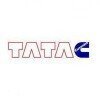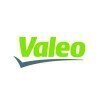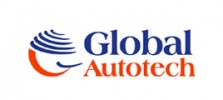Filter interviews by
Saket Fabs Senior Quality Engineer Interview Questions and Answers
Saket Fabs Senior Quality Engineer Interview Experiences
1 interview found
I applied via Referral and was interviewed in Jun 2024. There was 1 interview round.
(2 Questions)
- Q1. What is poke yoka and kaizen
- Ans.
Poke yoka and kaizen are Japanese terms used in quality management. Poke yoka refers to mistake-proofing, while kaizen refers to continuous improvement.
Poke yoka focuses on preventing errors by designing processes that make mistakes impossible or easily detectable.
Kaizen involves making small, incremental improvements to processes, products, or services on a continuous basis.
Examples of poke yoka include using color co...
- Q2. Are you work on 5 core tool
- Ans.
Yes, I have experience working with the 5 core tools in quality engineering.
I have experience working with the 5 core tools: APQP, PPAP, FMEA, MSA, and SPC.
I have utilized APQP (Advanced Product Quality Planning) to ensure quality in new product development.
I have conducted PPAP (Production Part Approval Process) to validate supplier parts.
I have performed FMEA (Failure Mode and Effects Analysis) to identify and mitiga...
Interview Preparation Tips
Interview questions from similar companies

Senior Quality Engineer Interview Questions & Answers
Krishna Marutiposted on 16 Sep 2023
I applied via Approached by Company and was interviewed in Aug 2023. There were 2 interview rounds.

(5 Questions)
- Q1. QMS Implementation
- Ans.
Implementing a Quality Management System (QMS)
Understand the organization's quality objectives and requirements
Identify and document processes, procedures, and work instructions
Establish quality policies and objectives
Define roles and responsibilities for quality management
Implement document control and record keeping
Develop and implement training programs
Establish metrics and performance indicators
Conduct internal aud...
- Q2. IATF , ISO 14001 ISO 45001 KNOWLEDGE
- Q3. Implementation of IMS
- Ans.
IMS implementation involves the integration of various management systems to improve efficiency and effectiveness.
IMS stands for Integrated Management System
It combines multiple management systems, such as quality, environmental, and health and safety
IMS implementation aims to streamline processes, reduce duplication, and improve overall performance
Examples of IMS frameworks include ISO 9001, ISO 14001, and OHSAS 18001
- Q4. Core tools knowledge
- Q5. 7 qc tools implementation
- Ans.
The 7 QC tools are a set of problem-solving techniques used in quality management.
The 7 QC tools include: check sheets, histograms, Pareto charts, cause-and-effect diagrams, control charts, scatter diagrams, and flowcharts.
These tools help identify and analyze quality problems, prioritize issues, and track improvement progress.
For example, a check sheet can be used to collect data on defects, while a Pareto chart can v...
Interview Preparation Tips
- QMS
- IATF
- ISO 14001
- ISO 45001
- Core tools
Skills evaluated in this interview

I applied via Walk-in and was interviewed before Nov 2022. There were 2 interview rounds.
(1 Question)
- Q1. Tell me about yourself
(1 Question)
- Q1. Tell me about 7 core tools
- Ans.
The 7 core tools are a set of quality control tools used in process improvement.
1. Process Flow Charts - visual representation of the steps in a process
2. Cause and Effect Diagrams (Fishbone Diagrams) - identifying root causes of problems
3. Check Sheets - data collection tool for tracking occurrences of a specific event
4. Pareto Charts - prioritizing issues based on frequency or impact
5. Histograms - visual representat...

I applied via Recruitment Consulltant and was interviewed before Oct 2021. There were 4 interview rounds.

(6 Questions)
- Q1. Brief about yourself
- Ans.
I am an experienced Senior Quality Engineer with a strong background in quality assurance and process improvement.
Over 10 years of experience in quality engineering
Expertise in developing and implementing quality control processes
Proficient in conducting audits and inspections to ensure compliance
Skilled in analyzing data and identifying areas for improvement
Strong knowledge of quality standards and regulations
Excellen
- Q2. Why you want to change job
- Ans.
I am seeking new challenges and opportunities for growth in my career as a Senior Quality Engineer.
Seeking new challenges and opportunities for growth
Looking for a more dynamic and innovative work environment
Desire to work with a larger team and learn from experienced professionals
Want to contribute my skills and expertise to a company that aligns with my values and goals
- Q3. Your family background
- Ans.
I come from a diverse family background with a mix of cultures and traditions.
My parents are from different countries, which has exposed me to different languages and customs.
Growing up, I celebrated holidays and traditions from both sides of my family.
Having a diverse family background has taught me to appreciate and respect different perspectives and ways of life.
- Q4. Do you know about motors
- Ans.
Yes, I have knowledge about motors.
I have experience working with various types of motors such as AC, DC, and stepper motors.
I am familiar with motor control systems and their components such as drivers, encoders, and sensors.
I have worked on projects involving motor testing and troubleshooting.
I have knowledge of motor specifications and their applications in different industries.
I am proficient in using tools such as...
- Q5. How long will you work for us
- Ans.
I am committed to working for the company for the long term and contributing to its success.
I am looking for a stable and fulfilling career, and I believe this position aligns with my long-term goals.
I am excited about the opportunity to make a significant impact in this role and grow professionally within the company.
I am committed to continuous learning and development, and I believe this company provides the right e...
- Q6. Your current ctc and expectation
- Ans.
I prefer to discuss the salary range for this position before disclosing my current ctc and expectation.
I am open to negotiation based on the responsibilities and requirements of the role.
I am looking for a competitive salary package that aligns with my experience and skills.
I am willing to consider other benefits such as health insurance, retirement plans, and vacation time.
I am confident that we can come to a mutuall
(2 Questions)
- Q1. What is the difference between accuracy and precision
- Ans.
Accuracy refers to how close a measured value is to the true value, while precision refers to how close multiple measurements are to each other.
Accuracy is the degree of closeness between a measured value and the true value.
Precision is the degree of closeness between multiple measurements of the same quantity.
Accuracy is related to systematic errors, while precision is related to random errors.
Accuracy can be affected...
- Q2. What is PPAP and SPC
- Ans.
PPAP stands for Production Part Approval Process and SPC stands for Statistical Process Control.
PPAP is a standardized process in the automotive industry to ensure that all parts meet customer requirements.
SPC is a method of monitoring and controlling a process by analyzing data to identify and reduce variation.
PPAP includes documentation such as design records, engineering change orders, and test results.
SPC involves ...
(1 Question)
- Q1. Do you know about motors
- Ans.
Yes, I have knowledge about motors.
I have studied the principles of motors and their applications.
I have worked with motors in my previous job as a Quality Engineer.
I am familiar with different types of motors such as AC motors, DC motors, and stepper motors.
I have experience in testing and validating motors for quality and performance.
I am aware of the safety precautions that need to be taken while working with motors
Interview Preparation Tips
- Motors
- Alternator
- PPAP
- GD&T
- SPC
- Apqp
- NPD
- 7Qc
- SGA
- Qit
- 8D

I applied via Approached by Company and was interviewed in Jul 2024. There was 1 interview round.
(5 Questions)
- Q1. What is 7 qc tool
- Ans.
The 7 QC tools are a set of basic statistical tools used for quality control and improvement in manufacturing and service industries.
Check sheet: Used to collect and organize data in a systematic way.
Histogram: Represents data distribution visually.
Pareto chart: Helps identify the most significant factors contributing to a problem.
Cause-and-effect diagram (Ishikawa or fishbone diagram): Identifies potential causes of a...
- Q2. What is 5S and its use
- Ans.
5S is a methodology used to organize a workplace for efficiency and effectiveness by identifying, sorting, setting in order, shining, and sustaining.
Sort: Remove unnecessary items from the workplace
Set in order: Organize remaining items in a logical manner
Shine: Clean and inspect the workplace regularly
Standardize: Establish procedures and schedules for maintaining the first 3 S's
Sustain: Ensure the practices are consi...
- Q3. What is 4M its work
- Ans.
4M is a method used in quality management to identify and address potential issues in a process.
4M stands for Man, Machine, Material, and Method.
It is used to analyze and improve processes by considering the impact of these four factors.
For example, in manufacturing, 4M can help identify if a quality issue is due to human error, machine malfunction, material defects, or the method of production.
- Q4. What is TPM and its pillars
- Ans.
TPM stands for Total Productive Maintenance, a proactive approach to maintenance involving all employees to improve equipment effectiveness.
TPM focuses on maximizing equipment effectiveness through proactive maintenance
The pillars of TPM include autonomous maintenance, planned maintenance, quality maintenance, focused improvement, early equipment management, and training & education
Example: Implementing autonomous main...
- Q5. What is JH its use
- Ans.
JH stands for Job Hazard Analysis, a process used to identify and mitigate potential hazards in the workplace.
JH is a systematic process for identifying potential hazards in a job task or process.
It involves breaking down the job into steps, identifying potential hazards at each step, and implementing controls to mitigate those hazards.
Examples of hazards that may be identified through JH include exposure to harmful ch...

I applied via Company Website and was interviewed in Aug 2024. There were 2 interview rounds.
Department of quality (PDI Quality)
Pre dispatch audit , testing , kitting etc.
Interview Preparation Tips
- Quality Control
- PDI
- Auditing

I applied via Naukri.com and was interviewed before Apr 2021. There was 1 interview round.
(1 Question)
- Q1. What is your expected salary and notice period?
- Ans.
My expected salary is negotiable based on the responsibilities and benefits offered. My notice period is typically 2 weeks.
Expected salary is negotiable based on responsibilities and benefits
Notice period is typically 2 weeks

Standard online aptitude tests with some written questions
Group assessment day, lasted 4 hours, group tasks followed by one-on-one

I applied via Walk-in and was interviewed in Jan 2024. There was 1 interview round.
(2 Questions)
- Q1. Technical round interview
- Q2. Quality control
Interview Preparation Tips

I applied via Walk-in and was interviewed in Oct 2023. There were 3 interview rounds.

(2 Questions)
- Q1. What is the function of alternator &stator
- Ans.
The alternator generates electricity to power the vehicle's electrical system, while the stator is a stationary component that helps produce electricity in the alternator.
Alternator converts mechanical energy into electrical energy
Stator is a stationary part of the alternator
Stator contains wire windings that produce electricity when the rotor spins
Alternator charges the battery and powers the electrical system of the
- Q2. What is winding
- Ans.
Winding is the process of wrapping a material around a core or spool to create a coil or roll.
Winding is commonly used in the manufacturing of electrical coils, transformers, inductors, and motors.
The material being wound can be wire, thread, yarn, tape, or any other flexible material.
The winding process can be done manually or using automated machinery.
Examples include winding copper wire around a bobbin to create a t...
(2 Questions)
- Q1. What is alternator &stator
- Ans.
An alternator is a device that converts mechanical energy into electrical energy, while a stator is the stationary part of a rotary system.
Alternator is used in vehicles to charge the battery and power the electrical system
Stator is the stationary part of an electric motor or generator
Alternator produces alternating current (AC) while stator helps in generating a magnetic field
- Q2. What is 52wh word
- Ans.
52wh word is a term used in quality engineering to refer to a specific type of problem-solving technique.
52wh word stands for Who, What, Where, When, Why, How, How much, How many, and How often.
It is used to systematically analyze a problem by asking these key questions.
For example, when faced with a quality issue in a manufacturing process, a quality engineer may use the 52wh word technique to identify the root cause
Interview Preparation Tips
Saket Fabs Interview FAQs
Tell us how to improve this page.
Interview Questions for Popular Designations
- Quality Engineer Interview Questions
- Quality Inspector Interview Questions
- Quality Controller Interview Questions
- Quality Assurance Interview Questions
- Quality Manager Interview Questions
- Quality Executive Interview Questions
- Quality Assurance Officer Interview Questions
- Executive Quality Assurance Interview Questions
- Show more
People are getting interviews through
Senior Quality Engineer Interview Questions from Similar Companies
Saket Fabs Senior Quality Engineer Reviews and Ratings
based on 1 review
Rating in categories
|
Quality Engineer
10
salaries
| ₹2.8 L/yr - ₹4.8 L/yr |
|
Production Engineer
10
salaries
| ₹2 L/yr - ₹4 L/yr |
|
Assistant Manager
9
salaries
| ₹5 L/yr - ₹8 L/yr |
|
Senior Engineer
6
salaries
| ₹2.6 L/yr - ₹5 L/yr |
|
Executive Accountant
5
salaries
| ₹3.1 L/yr - ₹4.9 L/yr |

Continental Automotive Components

Yazaki

Valeo

Motherson Automotive Technologies and Engineering
Calculate your in-hand salary
- Home >
- Interviews >
- Saket Fabs Interview Questions >
- Saket Fabs Senior Quality Engineer Interview Questions










